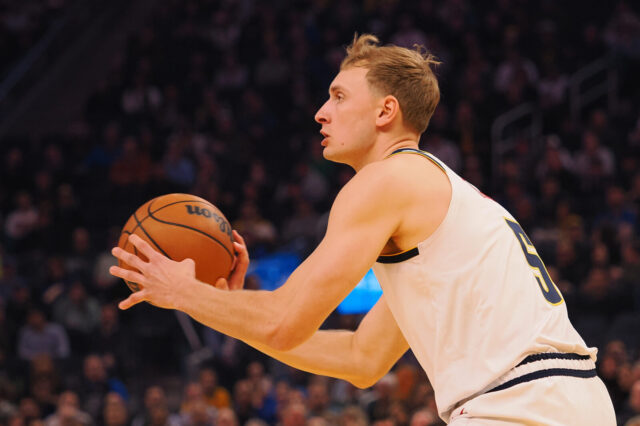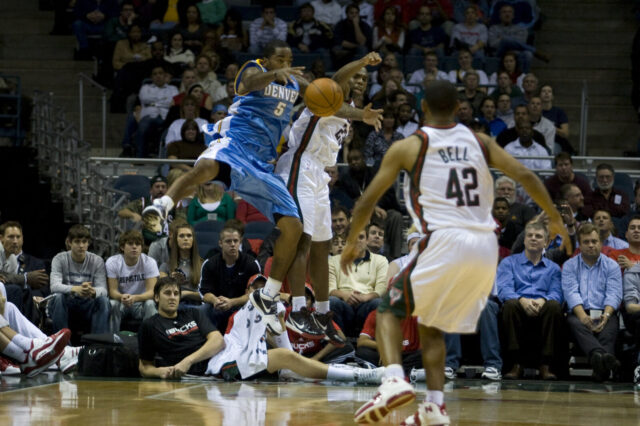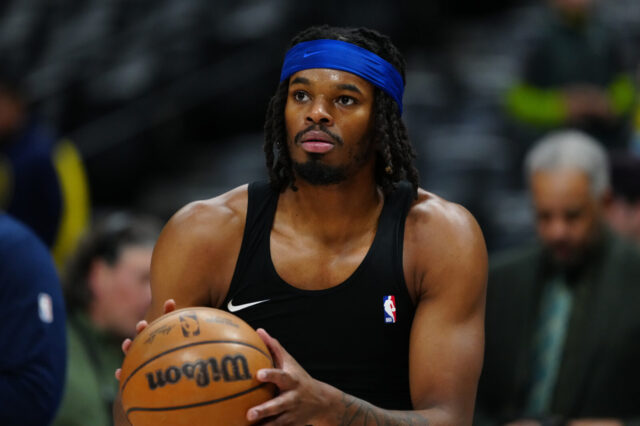For those of you stuck behind a desk today, take some time to peruse some of these articles:
Shot Selection Round-Up: Part 2 – Ian Levy, Hickory-High
Again, shot selection is not the be-all, end-all variable for good offense but its impact is significant. In a hypothetical world where the 76ers‘ shooting percentages from each area of the floor where completely static and immune to changes from outside factors; bringing just their shot selection up to league average XPPS would raise their TS% from 50.9%, 29th in the league this season, to 51.7%, which would have ranked 21st. Using that number, some regression analysis I’ve done previously, and holding their OReb% and TO% constant, we can predict that their ORtg. would jump from the 99.9 they actually averaged in the regular season to 102.9. That would essentially give them an even point differential for the season, the mark of a 0.500 team. I know I’m sprinting down a slippery slope here, assuming a huge number of other variables wouldn’t change as well, but since the 76ers finished at 34-48 we can estimate that their shot selection may have cost them as many as seven wins this season.
At the other end of the spectrum we find a pair of teams working shot selection to some unbelievable advantages. The top two team shot selections this season, measured by XPPS, were the Houston Rockets (1.103) and the Denver Nuggets (1.094). Those two marks were not only the highest this season, they’re the two highest for the last 12 NBA seasons (which is as far back as my data goes). Given the way shot selection is trending in the NBA, it may be safe to say that they’re the two most efficient shot selections of the three-point era.
Lots of Nuggets fans tend to think that George Karl has no offensive system, but clearly his players listen to what he wants in the shot selection department and it’s reflected in the numbers above.
Ok, Who Wants to Sign Dwight? – Barry Petchesky, Deadspin
The math is simple enough. The Lakers can offer more money and more years. The four potential suitors-the Rockets, Mavericks, Clippers, and Hawks-can offer fresh starts, and maybe even better teams.
More money and more years typically wins out in the NBA. How often do we see free agents, with the recent CBAs, ditch the team that has their "Bird Rights" aka the honor to pay them more than anyone else? Most of the big names we've seen switch teams have done so via trade and sign-and-trade. With the new restrictions on sign-and-trade deals (mainly, you can't get a sign-and-trade done if your team is over the salary cap "*apron") it might be even more rare to see guys like Howard skip town.
Would it be wise for Howard to ditch the Lakers? From the list above I’d say, yes. Playing in Houston with James Harden, Chandler Parsons, and even Jeremy Lin would be beneficial to Howard. He could focus on defense and he would get his chances on offense in the fast-paced system that Kevin McHale runs.
Teaming up with Chris Paul with either the Clippers or Hawks would be wise, too. Atlanta would still have Al Horford and the Clippers have Blake Griffin – to go along with the other role players in each city – smart. Staying with the Lakers would be Howard’s biggest gamble as he’d have to carry more of the load and who knows what that roster may wind up looking like next season and beyond (Dallas, to me, is also a risky situation).
It would seem like Howard will likely be sticking around out West with four of his five suitors being in the Western Conference, so as Nuggets fans – we should expect to see a lot of Howard for the next four to five seasons, at least.
*Note on sign-and-trade deals under the new CBA:
To make matters worse, any team that exceeds the cap "apron" – which is $4 million over the existing luxury tax level – is not allowed to bring in a player in a sign-and-trade deal. That team also will only be able to offer a three-year mid-level exception deal to a free agent rather than the four-year exception that teams under the apron can offer, putting them at a bargaining disadvantage on the open market.
Spurs take Game 1 and play brilliant defense on Zach Randolph
Randolph finished with a season-low two points on 1-of-8 shooting in 28 minutes, the lowest-scoring playoff game by a player who averaged at least 15 points per game in the regular season and played more than 20 minutes in the playoff game since Ray Allen in Game 3 of the 2010 NBA Finals.
In the rare times Memphis actually got the ball inside to Randolph – three of his shots, including his lone make, came directly after offensive rebounds (two of which Randolph got due to San Antonio’s fronting) – the Spurs effectively used double-teams.
I was asked about Randolph's poor game on Twitter and I just assumed (before watching the game, DVR style) that Zach perhaps was having a poor first-half. It turned out to be a poor game and it was more than an off-night. It was the Spurs defense. They didn't allow Randolph to get comfortable: winning battles for position on the block, not falling for his fakes, doubling when he got around the post-defender, and just length.
Against the Thunder, Zach was the more physical player and won the battles for real estate around the rim, not the case in Game 1. Things were getting so bad that Randolph resorted to just flat-out shoving Tim Duncan on, at least, one occasion to try to create some space near the rim. If you needed more proof as to Randolph’s importance to Memphis’ offense – look no further than this game.
If the Spurs can manage to come up with a few more games like that against Memphis' post-machine, it could be a very short series. But that's what adjustments are all about.


